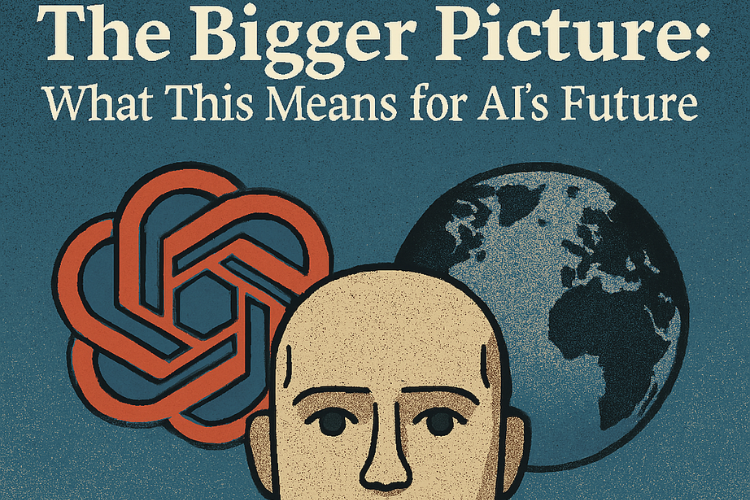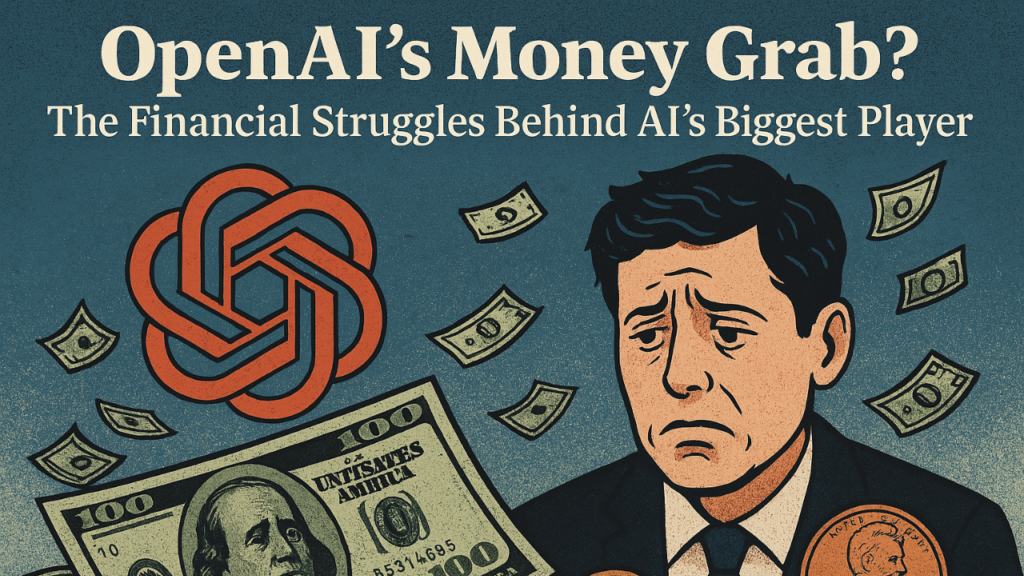Introduction
OpenAI is one of the most influential companies in artificial intelligence. Their models, like ChatGPT and GPT-3, have transformed the way we interact with AI. However, despite their success, OpenAI is facing serious financial challenges.
Reports indicate that the company is losing money rapidly due to high operational costs. In response, OpenAI is betting big on Artificial General Intelligence (AGI). They believe AGI could be the key to solving their financial problems. But is this a wise move?
This blog explores OpenAI’s financial struggles, its ambitious plans for AGI, and what these developments mean for the future of AI. Let’s dive in.
OpenAI’s Rise to AI Dominance
OpenAI started with a mission to create safe and beneficial AI. Over the years, they introduced several groundbreaking models, including:
- GPT-3: One of the most powerful language models ever created.
- ChatGPT: A conversational AI used by millions worldwide.
- DALL·E: An AI model that generates images from text.
These innovations have set OpenAI apart. The demand for their products has skyrocketed, and AI adoption has accelerated across industries. Businesses use ChatGPT for customer service, content creation, and even coding assistance.
However, OpenAI’s dominance is not just about product innovation. It has also been fueled by strong partnerships and investments. Microsoft invested billions in OpenAI, integrating its models into products like Azure OpenAI services and Copilot. This backing has allowed OpenAI to expand rapidly, but it also means high expectations from investors.
Despite these advancements, OpenAI is struggling financially. The cost of running and training these models is immense. Let’s explore why.
The Cost of Innovation: Why OpenAI Is Losing Money
Developing AI is expensive. Training large-scale models requires powerful hardware, vast amounts of data, and extensive computing power. Some key factors draining OpenAI’s finances include:
1. High Computational Costs
OpenAI relies on advanced GPUs and TPUs to train its models. These components consume enormous amounts of electricity. Running large-scale AI operations costs millions every month.
Each new version of OpenAI’s models requires even more computational power. Training GPT-4 was significantly more expensive than GPT-3, and future models will demand even greater resources. Data processing, server maintenance, and power consumption contribute to mounting costs.
2. Infrastructure Expenses
To support its AI models, OpenAI needs massive cloud storage and computing resources. Partnering with companies like Microsoft helps, but infrastructure costs remain high.
AI companies depend on data centers, which require extensive cooling systems and high-performance networking. These centers must operate efficiently to ensure real-time AI responses, further increasing operational expenses.
3. Limited Revenue Streams
Despite its popularity, OpenAI’s revenue sources are still developing. Paid subscriptions like ChatGPT Plus generate income, but they may not be enough to cover expenses.
Enterprise licensing deals and API access provide additional revenue. However, OpenAI must compete with alternative AI models, some of which are open-source and available for free. If businesses opt for more affordable AI solutions, OpenAI may struggle to maintain profitability.
4. Competition and Market Pressures
Big tech companies, including Google and Meta, are pushing AI innovation. This forces OpenAI to spend heavily on research and development to stay ahead.
Google’s Gemini and Anthropic’s Claude are direct competitors, offering similar AI capabilities. If these competitors release more cost-effective or innovative models, OpenAI risks losing market share. Keeping up with AI advancements requires constant reinvestment, further straining finances.
As expenses mount, OpenAI is looking for a long-term solution. This is where AGI comes in.
The AGI Bet: OpenAI’s Risky Strategy
Artificial General Intelligence (AGI) is a step beyond today’s AI. Unlike specialized AI models, AGI would possess human-like reasoning and problem-solving skills. OpenAI believes AGI can be the key to its future success.
But AGI development is risky. Here’s why:
1. Uncertain Timelines
Building AGI is not easy. Experts debate whether it will take decades or even longer to develop. OpenAI’s financial problems may worsen before AGI becomes a reality.
2. Ethical and Safety Concerns
Creating an advanced AI system raises concerns about security, misuse, and control. Governments and regulatory bodies may step in, delaying OpenAI’s progress.
3. Investor Expectations
Investors want returns. If OpenAI cannot generate profits soon, financial backing could weaken. Betting on AGI could make investors nervous.
4. Public and Industry Skepticism
Many AI researchers remain doubtful about AGI’s feasibility. While OpenAI envisions AGI transforming industries, critics argue that true general intelligence may never be achieved. If AGI remains elusive, OpenAI’s gamble could backfire.
While AGI is promising, it’s a high-stakes gamble. If OpenAI fails to achieve AGI soon, their financial troubles may deepen.
The Bigger Picture: What This Means for AI’s Future
OpenAI’s struggles reflect broader trends in the AI industry. AI development is expensive, and few companies can afford the costs. Here’s how OpenAI’s situation affects the AI landscape:

1. Increased Investment in AI
Despite OpenAI’s challenges, AI investment is growing. Companies see AI as the future and continue pouring money into research.
2. Rising Costs for AI Startups
Smaller AI companies struggle to compete due to high infrastructure costs. This could lead to market consolidation, where only big players like OpenAI, Google, and Microsoft dominate.
3. Regulatory Challenges
Governments are paying closer attention to AI. As AI becomes more advanced, regulations may increase, impacting business strategies.
4. Ethical AI Development
The financial pressure on AI firms may push some to cut corners on ethics and safety. If AI models are rushed to market, it could lead to serious consequences, including bias, misinformation, and security risks.
OpenAI’s financial issues are not unique. Other AI firms may soon face similar problems. How they navigate these challenges will shape the future of AI.
Conclusion: The Reality of AI’s Business Challenges
OpenAI’s financial troubles reveal the cost of AI innovation. Building and maintaining AI models requires massive resources. While OpenAI is pushing towards AGI as a solution, this strategy comes with risks.
The AI industry is at a turning point. Companies must find sustainable business models to survive. AI is transforming industries, but its financial realities cannot be ignored.
As the AI landscape evolves, staying informed is crucial. Platforms like StartupHakk provide valuable insights into AI trends, helping businesses and individuals navigate this complex space. Whether OpenAI succeeds or not, one thing is certain—the future of AI will be shaped by both innovation and financial sustainability.




